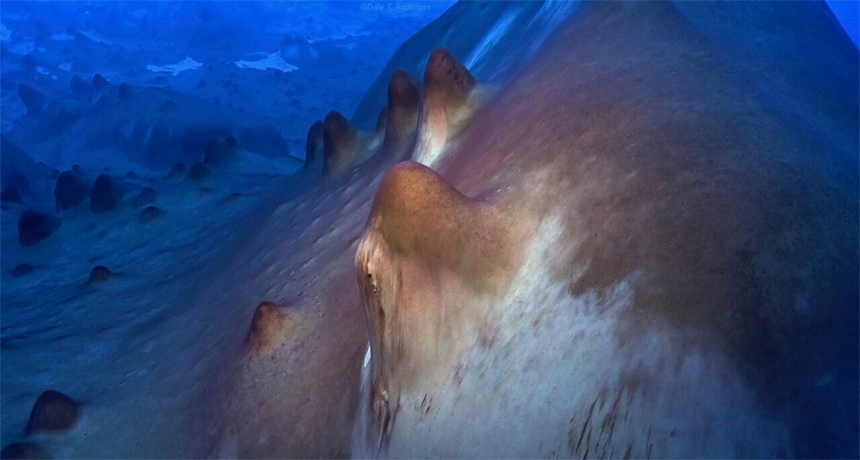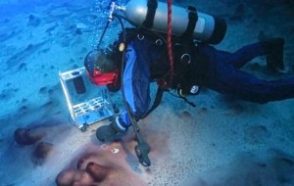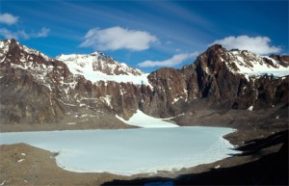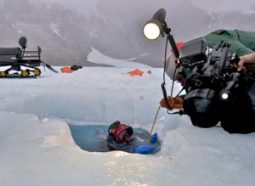Busy bacteria leave big mark
Earth’s earliest life-forms built mounds on an Antarctic lake bottom

Mats of bacteria here are slowly forming large cone-shaped structures known as stromatolites. They're seen, bathed in blue light, on the floor of an Antarctic lake known as Untersee.
© 2011 Dale T. Andersen http://daleandersen.seti.org
Scientists recently dove into Lake Untersee, a large freshwater lake in Antarctica, and discovered fields of cone-shaped mounds on the lake floor. Though they look like spooky, alien traffic cones, these mounds aren’t the work of extraterrestrials. The scientists say the cones, called stromatolites, were built by bacteria, and the construction project probably took thousands of years.

Andersen is a researcher at the SETI Institute in Mountain View, Calif. He studies organisms that live in extreme environments, and he braved Lake Untersee’s frigid waters to see the bacteria-built stromatolites and lead a study on them. By studying life in harsh places, scientists like Andersen hope to learn more about life in general.
Over the years, researchers have discovered organisms that can survive in surprising environments not unlike the hostile conditions on other planets. Lake Untersee, for example, is super-cold and contains an abundance of a compound called methane. These same conditions — cold and lots of methane — also describe many of the moons of Jupiter and Saturn.

“It’s like going back to early Earth,” Dawn Sumner told Science News. Sumner, who also worked on the new study, is a geologist at the University of California, Davis. “These are just incredibly beautiful microbial landscapes,” she says. Bacteria are a type of microbe, or extremely small organism.
Scientists know of only a few places on Earth where stromatolites develop. Andersen and his team say those at the bottom of Lake Untersee have unusual shapes and sizes. The lake’s stromatolites are large: some stand about a foot and a half tall. They’re made mostly of cyanobacteria, which are the earliest known life-form on Earth. Like plants, cyanobacteria convert sunlight to food in the process called photosynthesis.

“There’s something very special about this particular example that’s allowing these large conical stromatolites to form,” Sumner told Science News.
Later this year, the scientists have another chance to investigate: In November, they’ll return to the freezing waters to collect a few more samples of the bacteria-built mounds at the bottom of Lake Untersee.







